Stories of Korea’s nine seowon
Introduction to 9 seowon, UNESCO World Heritage Sites
Compiler of seowon rulesDodongseowon Dalseong (Historic Site No. 488)
If you stand at Daramjae, which is in the middle of Daenisan Mountain (located to the east if one travels along Nakdonggang River from Hyeongpung-eup, Daegu), you can see Dodongseowon in the distance, nestled at the foot of the mountain. While walking back down the mountain, you can perhaps absolve yourself of the “irreverence” of having looked down at this respected institution from an elevated place. Whether uphill or not, the path to Dodongseowon is always one that requires a calm mind.
All sound files
Important functions of seowon
- Outline
- Veneration
- Learning
- Interaction
- Other aspects
Outline
While walking back down the mountain, you can perhaps absolve yourself of the “irreverence” of having looked down at this respected institution from an elevated place. Whether uphill or not, the path to Dodongseowon is always one that requires a calm mind.
-

Scenery of Dodongseowon
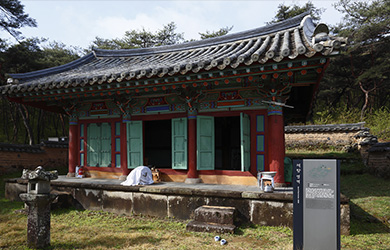
Sau
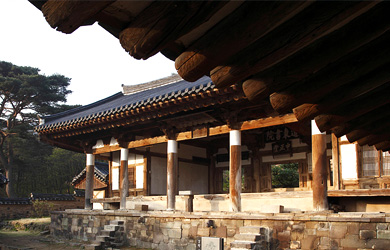
Jungjeongdang
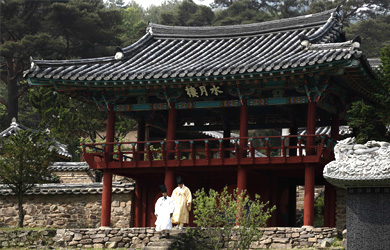
Suweolnu
Suweolnu, a pavilion with a three-doored façade, is decorated with vivid dancheong colors and has a high roof with four raised corners. After passing Suweolnu, one arrives at a low, narrow gate called “Hwanjumun” (“hwanju” means “to call the master of my heart”). Therefore, before passing through this gate, one has to think honestly about whether the “master” of one’s heart is awake. As such, literati who entered places of learning in the Joseon dynasty were much more interested in what was on the inside rather than outward appearances.
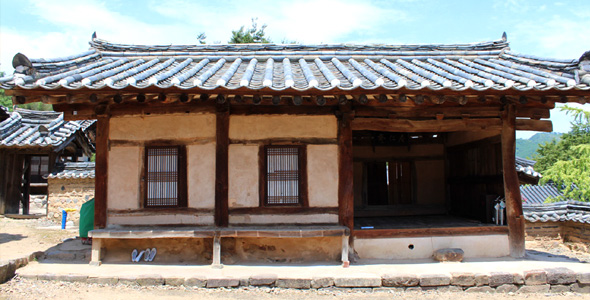
Geoinjae
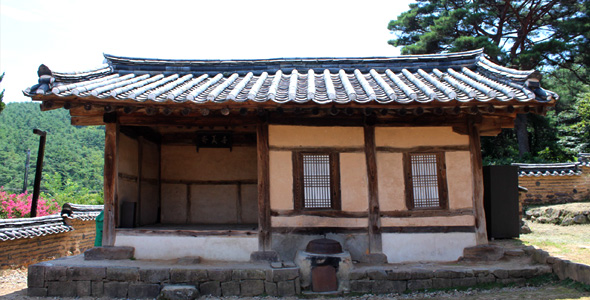
Geouijae
Geouijae (meaning “where righteousness lives”) and Geoinjae (meaning “where benevolence lives”) are the two student dormitories on the east and west sides of the seowon, which were probably lit up at night as the students studied late.
The highest point of Dodongseowon is occupied by the shrine. Kim Goeng-pil’s spiritual tablets are positioned in the center, with those of Jeong Gu on the left.
It is said that one must visit Dodongseowon at least four times a year in order to fully appreciate its beauty. In the spring, the shrine is graced with peony flowers in the courtyard, while red crape myrtles are in full bloom for all three months of summer. In the fall, the gingko trees display their golden leaves, while the snow-draped seowon in winter is the perfect place to make one’s heart and mind as clean as the white snow.
Veneration at Dodongseowon
After the ritual, the chukmun was burned in a square-shaped hole in the center of the seowon’s western wall. (Other seowon dug this hole in the ground.)
Because the entrance to the shrine was so low, everyone had to lower their head in order to enter. The height of the doorway was most likely intentional (to encourage ritual participants to arrive with a respectful and solemn state of mind). Chunchuhyangsa was conducted on the second and eighth lunar month of the year.
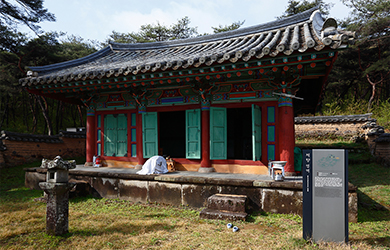
Sau
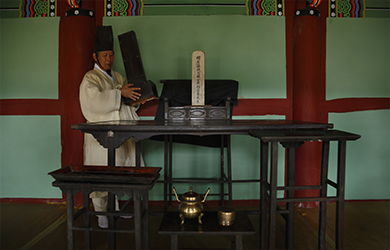
Inside Sau
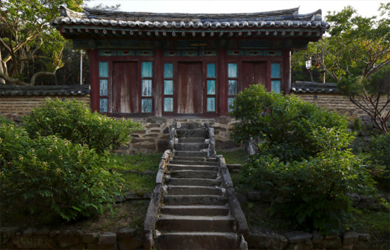
Naesammun
Venerated individuals
Kim Goeng-pil always wore a cholip (men’s wide-brimmed hat made with dried sedge) with strings made with lotus fruit. He studied day and night in the same room, always seated with a straight back. His family is said to have known when Kim was studying late at night because they could hear the sound of the lotus fruit clinking on the table. Kim is regarded as a member of the Confucian scholar “family tree” made up of Jeong Mong-ju, Gil Jae, Kim Suk-ha, and Kim Jong-jik. Yi Hwang praised Kim as a “top-rate Neo-Confucianism teacher.” Kim’s books include a posthumous collection of poems and essays Gyeonghyeollok (景賢錄), or Writings of Hanhwoendang, and Family Rituals. He was sentenced to death by poison in 1504 during the Gapja Sahwa (or Second Literati Purge).
Jeong Gu (1543-1620), who is also enshrined at Dodongseowon, was the maternal-line great-grandson of Kim Goeng-pil. Jeong was a prominent sarim scholar of southeastern Korea of yehak, which literally means “propriety,” in the 17th century and played a key role in the construction of Dodongseowon. Jeong was also the person who wrote the seowon’s regulations.
Learning at Dodongseowon
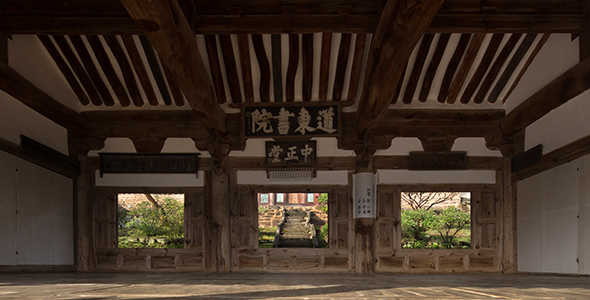
Jungjeongdang
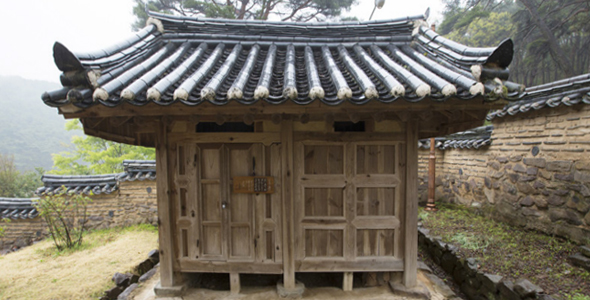
Jangpangak
Interaction at Dodongseowon
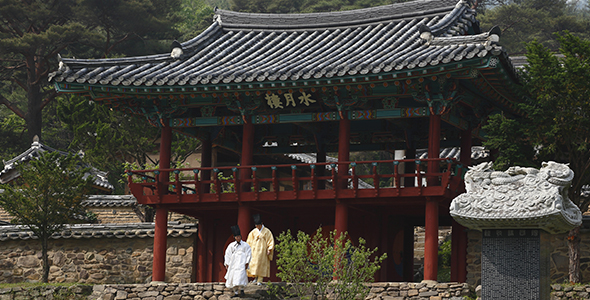
Suweolnu
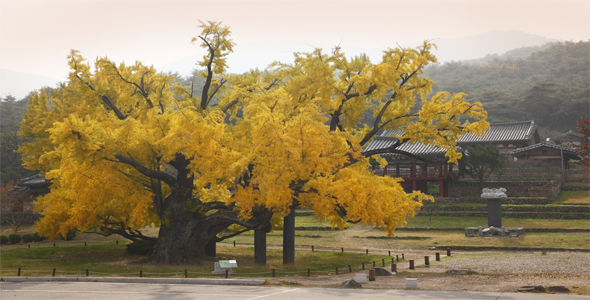
Gingko tree in Dodongseowon
Other aspects (cultural heritage items and memorial objects)

Jungjeongdang, Sau Wall (Treasure No. 350)
